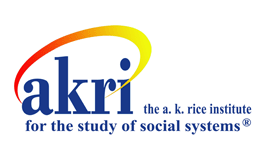The ideas of the A. K. Rice Institute (AKRI) originated in 1965 when Margaret Rioch collaborated with the Institute's namesake, A. Kenneth Rice to organize the first Group Relations Conference held in North America. A national educational institution, AKRI was founded in 1969 by Rioch to create a United States organization for management and promotion of Group Relations Conferences using the methodology developed by Rice in his work at the Tavistock Institute of Human Relations in the United Kingdom.
AKRI's original mission was to explore what events and processes produced non-rational behavior in social groups and relations. Today, the Institute’s mission has broadened to a more diverse audience in efforts to explore the different ways in which groups interact. AKRI continues to hold regular Group Relations Conferences, symposia, and training with the hope to promote further discussions and research on social interaction in the United States.
Historical archives of the A. K. Rice Institute are publicly available upon request at the library of American University in Washington, D.C. For more information and details, visit the A. K. Rice Institute Archives page of the American University Library.
Methodology
The methodology and approach of group relations study supported by the A.K. Rice Institute is primarily based in the work of British psychoanalyst Wilfred R. Bion and subsequent developments in the late 20th century.

